In the ever-evolving landscape of digital content, understanding the gaps in your current content strategy is essential for staying competitive and meeting audience expectations. Content Gap Analysis serves as a powerful tool to identify areas where your content may be lacking and where opportunities for growth lie. This comprehensive guide will walk you through the process of conducting a Content Gap Analysis for strategic content planning.
A content gap analysis is a crucial step in refining your content strategy and ensuring you’re meeting the needs of your audience. Here’s a comprehensive guide to conducting one:
1. Define your goals and audience For Content Gap Analysis:
- What are you hoping to achieve with your content (e.g., increased traffic, leads, conversions)?
- Who are you trying to reach with your content (e.g., demographics, interests, pain points)?
The foundation of a successful content gap analysis lies in clearly defining your goals and understanding your audience. These guide every step of the process, ensuring your efforts are targeted and impactful.
Setting Goals:
- Increase brand awareness: Are you aiming to introduce your brand to a new audience? Focus on creating informative and engaging content that showcases your expertise and resonates with your target demographics.

Brand awareness graphic
- Boost website traffic: Drive more visitors to your website by identifying topics with high search volume and creating content that ranks well in search engine results pages (SERPs).
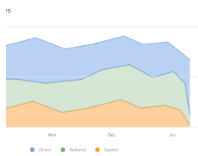
Website traffic graphic
- Generate leads and conversions: Want to turn website visitors into paying customers? Craft targeted content that educates prospects about your products or services and guides them through the buying journey.
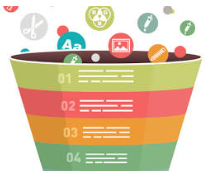
Lead generation graphic
- Improve brand loyalty: Foster deeper connections with existing customers by providing valuable content that addresses their needs and interests.

2. Identifying Your Audience When Doing Content Gap Analysis:
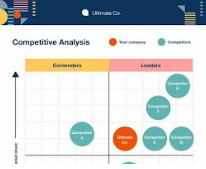
- Demographics: Consider age, gender, location, income, and education level.
- Interests and pain points: What are your audience’s passions and challenges? What information do they seek?
- Online behavior: Where do they spend their time online? What types of content do they consume?
- Buyer journey stage: Are they aware of your brand, considering your products, or ready to buy?
By aligning your goals with your audience’s needs and preferences, you can create content that truly resonates and delivers results.
Here are some additional tips for defining goals and audience:
- Be specific and measurable: Clearly define what you want to achieve and how you will measure success.
- Prioritize your goals: Don’t try to do everything at once. Focus on the most important goals first.
- Develop audience personas: Create detailed profiles of your ideal customers to better understand their motivations and behaviors.
- Conduct audience research: Use surveys, interviews, and social media listening to gather insights into your audience’s needs and preferences.
Remember, your goals and audience should guide every step of your content gap analysis. By taking the time to define them clearly, you’ll be setting yourself up for success.
3. Research your competitors for Content Gap Analysis:
- Identify your top competitors and analyze their content.
- See what topics they’re covering, what formats they’re using (blog posts, videos, infographics, etc.), and how they’re performing in search engines.
Competitor research is a crucial step in any content gap analysis. By understanding what your rivals are doing well (and not so well), you can identify opportunities to fill gaps in your own content strategy and gain a competitive edge.
Here’s how to research your competitors effectively:
- Identify Your Top Competitors:
- Start by making a list of your main competitors. Consider factors like market share, product/service offerings, and target audience.
- Analyze Their Content:
- Website: Visit their websites and browse their content library. Take note of the topics they cover, the formats they use (blog posts, infographics, videos, etc.), and the overall tone and voice.
- Social Media: Check their social media profiles to see what kind of content they’re sharing and how they’re engaging with their audience.
- Blog Posts: Pay particular attention to their blog posts. Analyze their titles, keywords, and overall quality. You can use tools like Ahrefs or SEMrush to see which of their blog posts are ranking well in search engines.
- Other Formats: Don’t forget to look at other content formats they might be using, such as ebooks, webinars, or case studies.
- Identify Content Gaps:
- We can analyze competitor keywords generating blog traffic and compare them with our website. This way, we can identify missing keywords and incorporate them into our blogs.
- Analyze the performance of your competitor’s content. See which pieces are generating the most engagement and traffic. This can help you identify topics that are likely to be successful for you as well.
- Pay attention to any negative feedback your competitors are receiving on their content. This can be a goldmine of insights for you, as it reveals areas where you can improve and differentiate yourself.
4. Tools and Techniques for Content Gap Analysis:
Keyword Research Tools:
-
Ahrefs:
Uncover your competitors’ top-ranking keywords, analyze search volume and difficulty, and identify gaps in your own keyword strategy.
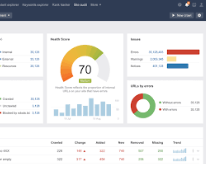
-
SEMrush:
Gain insights into keyword trends, related searches, and competitor keyword strategies, allowing you to target high-potential topics.
Uncover a treasure trove of relevant keywords using SEMrush’s Keyword Magic Tool. This powerful tool helps you:
- Brainstorm ideas: Enter a seed keyword and explore a vast network of related terms, long-tail variations, and question-based searches.
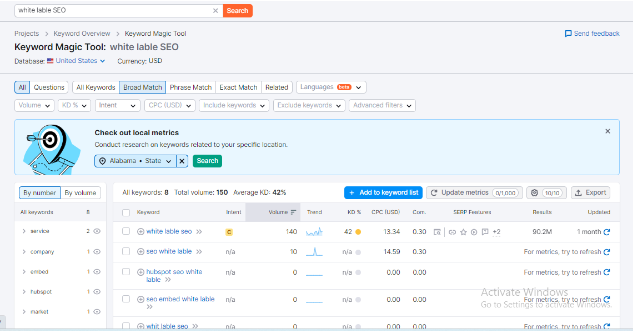
SEMrush Keyword Magic Tool
- Analyze search volume and difficulty: Prioritize keywords with high search volume and lower competition for optimal impact.
- Discover trending topics: Stay ahead of the curve by identifying emerging themes and subtopics within your niche.
- Competitor Analysis:
Gain valuable insights into your rivals’ content strategies with SEMrush’s Organic Research. This feature allows you to:
- Analyze top-ranking keywords: See what topics your competitors are ranking for and identify potential gaps in your own content coverage.
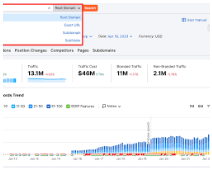
SEMrush Organic Research
- Compare content performance: Assess the estimated traffic and search ranking of your competitors’ content to understand their strengths and weaknesses.
- Uncover backlinks: Discover the websites linking to your competitors’ content, revealing valuable formats and topics that resonate with your target audience.
- Utilize the Gap Analysis Feature:
SEMrush streamlines the process with its dedicated Gap Analysis tool. This powerful feature directly compares your website’s content with your competitors’ for specific keywords, visually highlighting areas where you’re missing content or falling behind in terms of search ranking.
SEMrush Gap Analysis Feature
- Content Performance Tracking:
Monitor your progress and refine your strategy based on data-driven insights. SEMrush offers several tools for this purpose:
- Position Tracking:
Keep tabs on your keyword rankings over time and see how your content is performing in search results. Identify opportunities to improve your optimization and outrank your competitors.
- On-Page SEO Checker:
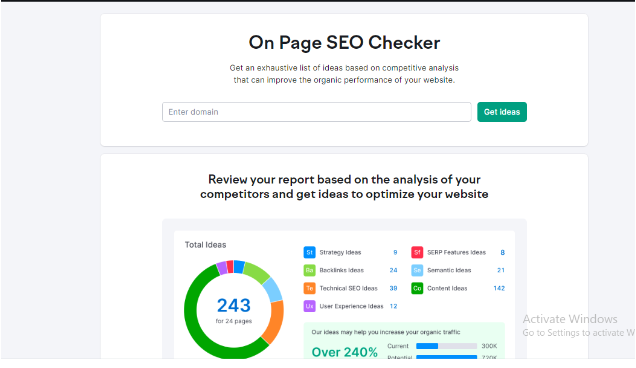
Analyze your existing content for SEO optimization opportunities. Get actionable insights on improving title tags, meta descriptions, headers, and internal linking to boost your search visibility.
- Social Media Post Tracking:
Track the engagement of your social media content and see what types of posts resonate best with your audience. This can inform your content creation strategy and help you identify gaps in your social media presence.
Remember: SEMrush is just one piece of the puzzle. Combine it with other tools, techniques, and your own understanding of your audience to create a comprehensive and actionable content gap analysis strategy.
Here are some additional tips for using SEMrush for content gap analysis:
- Set clear goals and objectives. What do you want to achieve with your content gap analysis?
- Focus on high-quality content. Don’t just create content to fill gaps. Make sure your content is informative, engaging, and valuable to your audience.
- Track your progress and make adjustments as needed. Your content gap analysis is an ongoing process. Regularly monitor your results and adapt your strategy as needed.
- Additional Techniques:
- Social media listening: Monitor relevant hashtags and keywords on social media to understand audience conversations and identify content gaps.
- Customer surveys and interviews: Directly ask your target audience what information they need and what topics they’re interested in.
- Industry reports and research: Stay up-to-date on the latest trends and developments in your industry to identify new content opportunities.
By combining these tools and techniques, you can conduct a comprehensive content gap analysis that reveals valuable insights and informs a winning content strategy. Remember, the key is to be strategic, data-driven, and audience-focused in your approach.
4. Audit your existing content:
- Take stock of all your existing content (website, blog, social media, etc.).
- Analyze the performance of each piece (traffic, engagement, conversions).
- Identify any gaps in your content coverage based on your audience and competitor research.
5. Analyze keyword opportunities:
- Use keyword research tools to identify relevant keywords your competitors are ranking for but you’re not.
- Focus on long-tail keywords that are more specific to your target audience’s needs.
- Consider the buyer’s journey and identify keywords for different stages (awareness, consideration, decision).
6. Analyze content formats:
- Look at the formats your competitors are using (e.g., blog posts, guides, webinars) and see if there are any opportunities to fill gaps with different formats.
- Consider audience preferences and what would be most engaging for them.
7. Prioritize your content gaps:
- Not all gaps are created equal. Prioritize which ones to address first based on their potential impact (e.g., high search volume, relevant to buyer journey stage).
- Consider resource constraints and focus on high-impact, feasible topics.
8. Create and publish content:
- Develop content that fills the identified gaps, ensuring it’s high-quality, informative, and valuable to your audience.
- Utilize the keywords you researched and optimize your content for search engines.
- Promote your new content through social media, email marketing, and other channels.
9. Monitor and refine:
- Track the performance of your newly created content (traffic, engagement, conversions).
- Measure whether it’s effectively filling the identified gaps.
- Continuously monitor your competitors and audience needs to identify new gaps and refine your content strategy.
Additional Tips:
- Use content gap analysis tools like SEOcrawl, Ahrefs, or SEMrush to streamline the process.
- Don’t just focus on keywords; ensure your content aligns with your brand voice and values.
- Collaborate with other departments (e.g., marketing, sales) to get insights into your audience needs.
- Stay up-to-date with SEO trends and best practices to ensure your content remains competitive.
By following these steps and staying consistent, you can conduct effective content gap analyses and create a content strategy that drives results for your business.
Remember, it’s an ongoing process, so regularly revisit your analyses and adapt your strategy to stay ahead of the curve.
A well-executed Content Gap Analysis is a dynamic process that empowers your content strategy with insights, ensuring your content remains relevant and resonant with your audience. By identifying and addressing gaps strategically, you position your brand as a valuable resource in your industry, fostering audience trust and engagement.
Unlock the potential of strategic content planning through Content Gap Analysis, and witness the transformative impact on your digital presence.
For the quality content gap analysis contact White Label SEO Lab. We are the leading white label digital marketing agency with a professional team to help you provide the perfect content gap analysis.
I am 10-year experienced digital marketing expert with experience of managing Local SEO, PPC, and Social media accounts.
